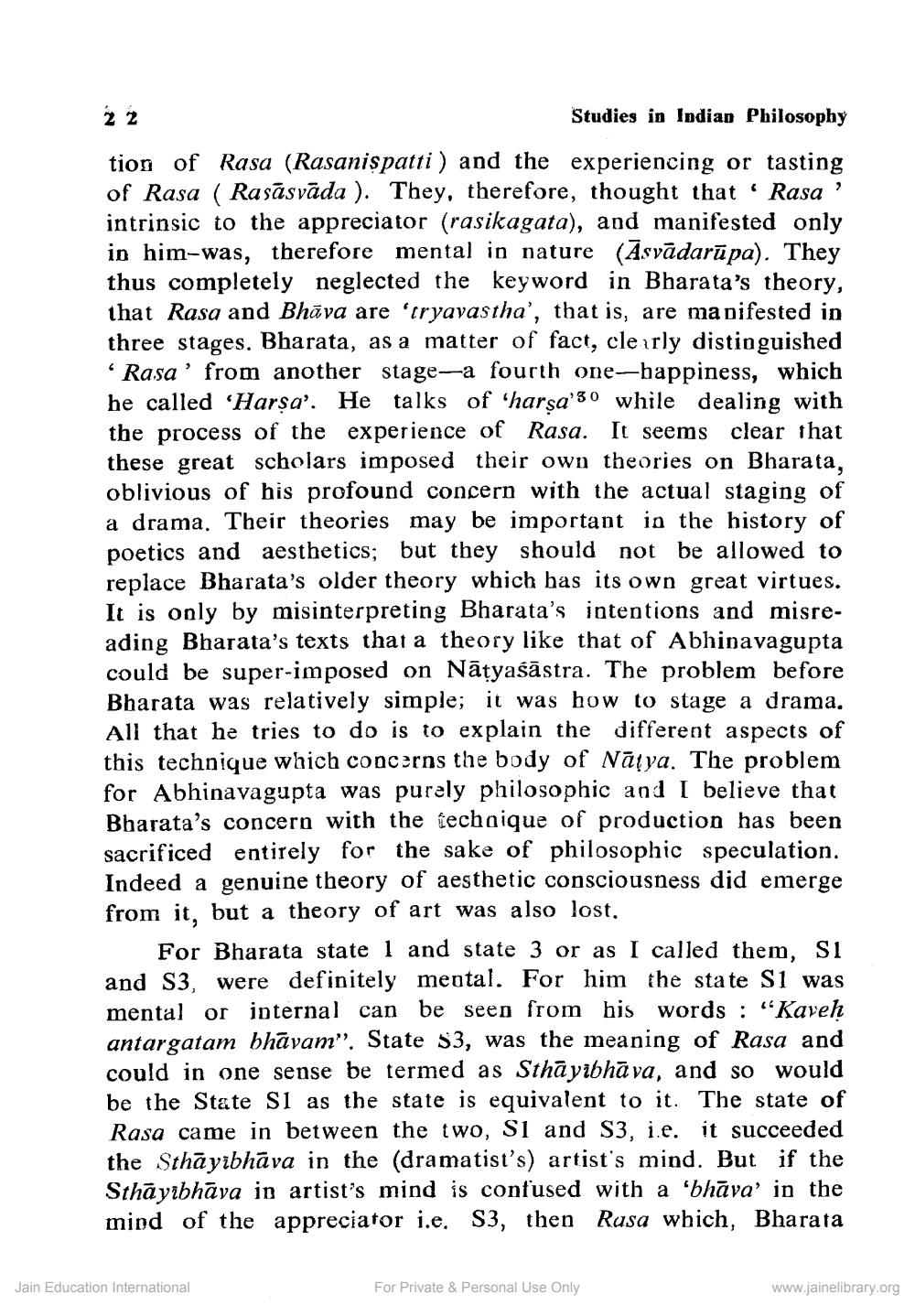________________
22
Studies in Indian Philosophy
tion of Rasa (Rasaniṣpatti) and the experiencing or tasting of Rasa (Rasasvada). They, therefore, thought that Rasa' intrinsic to the appreciator (rasikagata), and manifested only in him-was, therefore mental in nature (Asvādarūpa). They thus completely neglected the keyword in Bharata's theory, that Rasa and Bhava are 'tryavastha', that is, are manifested in three stages. Bharata, as a matter of fact, clearly distinguished 'Rasa' from another stage-a fourth one-happiness, which he called 'Harṣa'. He talks of 'harṣa'30 while dealing with the process of the experience of Rasa. It seems clear that these great scholars imposed their own theories on Bharata, oblivious of his profound concern with the actual staging of a drama. Their theories may be important in the history of poetics and aesthetics; but they should not be allowed to replace Bharata's older theory which has its own great virtues. It is only by misinterpreting Bharata's intentions and misreading Bharata's texts that a theory like that of Abhinavagupta could be super-imposed on Nāṭyaśāstra. The problem before Bharata was relatively simple; it was how to stage a drama. All that he tries to do is to explain the different aspects of this technique which concerns the body of Natya. The problem for Abhinavagupta was purely philosophic and I believe that Bharata's concern with the technique of production has been sacrificed entirely for the sake of philosophic speculation. Indeed a genuine theory of aesthetic consciousness did emerge from it, but a theory of art was also lost.
For Bharata state 1 and state 3 or as I called them, S1 and S3, were definitely mental. For him the state S1 was mental or internal can be seen from his words: "Kaveh antargatam bhavam". State $3, was the meaning of Rasa and could in one sense be termed as Sthayibhava, and so would be the State S1 as the state is equivalent to it. The state of Rasa came in between the two, S1 and S3, ie. it succeeded the Sthayibhava in the (dramatist's) artist's mind. But if the Sthayibhava in artist's mind is confused with a 'bhava' in the mind of the appreciator i.e. S3, then Rasa which, Bharata
Jain Education International
For Private & Personal Use Only
www.jainelibrary.org




